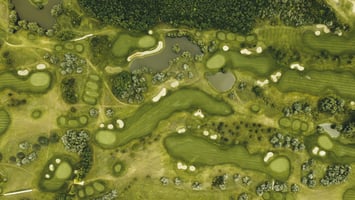Choosing the right golf clubs can feel overwhelming, especially if you’re new to the game. With so...
Swing Green: The Case for Pre-Loved Golf Clubs 🌱🏌️♂️
Welcome to the first post in our Sustainable Golf Series, running weekly as we count down to World Sustainability Week this March! Over the next few weeks, we’ll be exploring how golf—yes, the game we love—can become greener, cleaner, and more eco-friendly. We’re talking gear, courses, travel, and even the little things that make a big difference.
To kick things off, let’s talk about golf clubs—the tools of our trade. More specifically, let’s ask: why are more golfers switching to second-hand clubs, and what does that mean for your wallet and the planet?
The Green in Your Pocket 💰
With the cost of living on the rise, UK golfers are turning to the second-hand market in record numbers. Here’s what the stats say:
✔ 44% increase in sales of second-hand golf clubs in 2022 compared to the previous year.
✔ Meanwhile, the overall golf market saw a 10.6% drop in sales value, with new club sales declining by 13.8%.
✔ This signals a major shift in mindset—golfers are realising they can upgrade their gear without breaking the bank.
The second-hand market isn’t just about savings; it’s about value. A lightly used premium driver from last season can perform just as well as a brand-new one—at a fraction of the price.
The Green of Our Planet 🌍
Beyond personal savings, buying second-hand clubs helps cut golf’s environmental footprint.
Why? Because producing a new club isn’t as 'clean' as you might think.
🔹 Raw Materials – Mining metal for golf clubs contributes to deforestation and habitat loss.
🔹 Manufacturing – Club production releases carbon emissions and industrial pollutants.
🔹 Shipping – Global supply chains mean many clubs travel thousands of miles before reaching the shelves.
By choosing pre-owned gear, you’re keeping clubs in circulation, reducing the demand for new production, and cutting down waste. One small decision, a big impact.
What’s Next?
This is just the first in our sustainability series! Over the next few weeks, we’ll explore:
✅ How to Sell Your Old Golf Gear & Keep Clubs in Play – A deep dive into how selling your used clubs on Flyer extends their lifespan and keeps them out of landfills. Plus, tips for getting the best price!
✅ Recycled & Refurbished: Can Golf Balls Be Sustainable? – The environmental impact of lost golf balls and how Flyer sellers can tap into the growing market for lake balls and refurbished golf balls.
✅ Golf Clubs with a Green Mission – Highlighting UK golf clubs that actively promote second-hand gear and sustainability. Could there be Flyer partners in the future?
✅ The Carbon Footprint of Golf Gear – How far does a golf club travel before it reaches you? Comparing the environmental impact of buying second-hand vs. new, with a focus on global supply chains.
✅ The Future of Sustainable Golf Equipment – Brands are beginning to experiment with recycled materials and alternative production methods. Could a fully sustainable golf club exist? And how does this fit into the Flyer ecosystem?
Golf is a sport of precision, strategy, and smart decision-making. So, let’s apply that same thinking to how we approach sustainability! Stay tuned for next week's post, where we’ll explore how golf courses are going green—and how you can support them.
Got a great second-hand golf find? Share it with us in the comments or tag us on our social channels.





